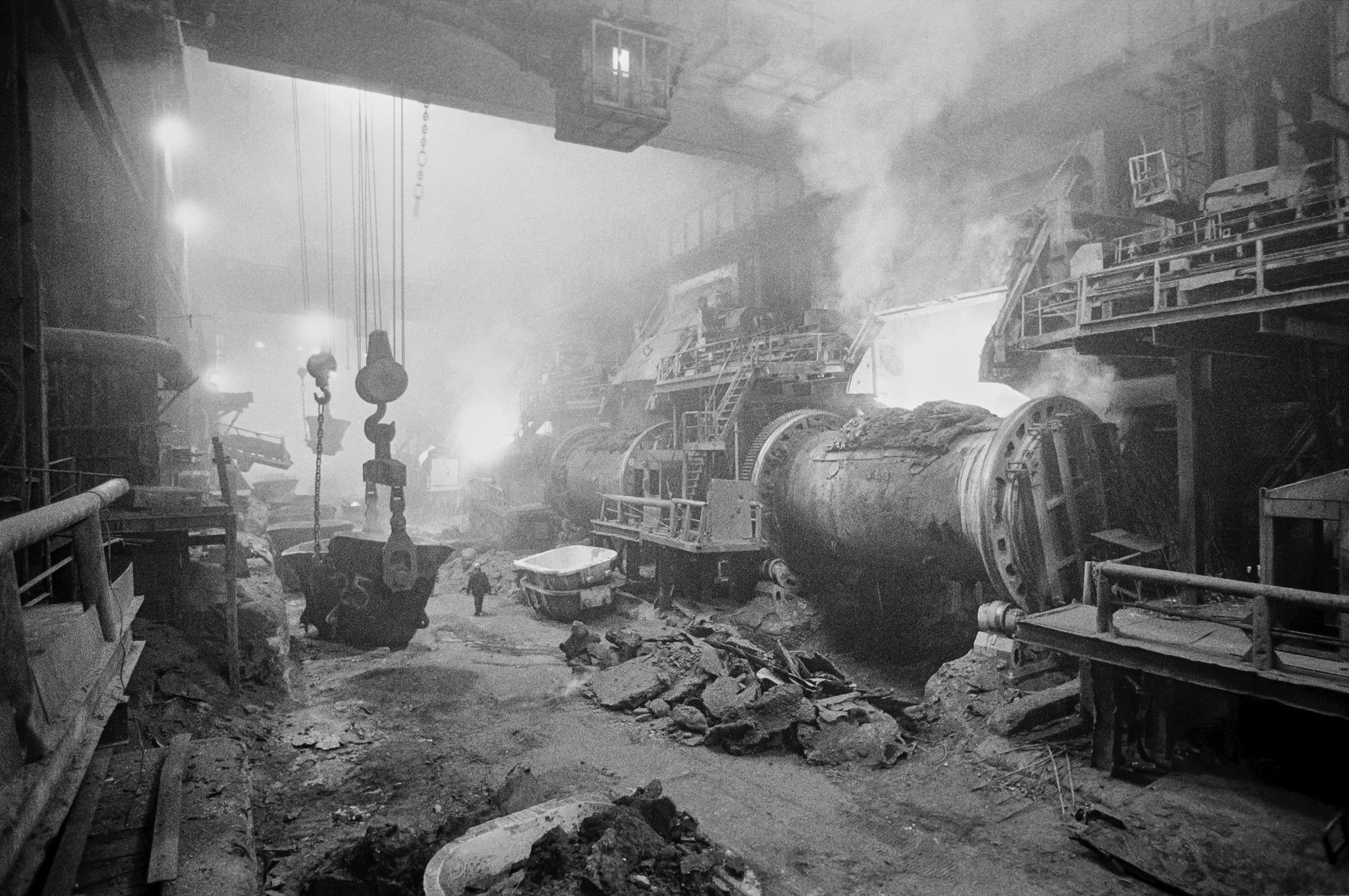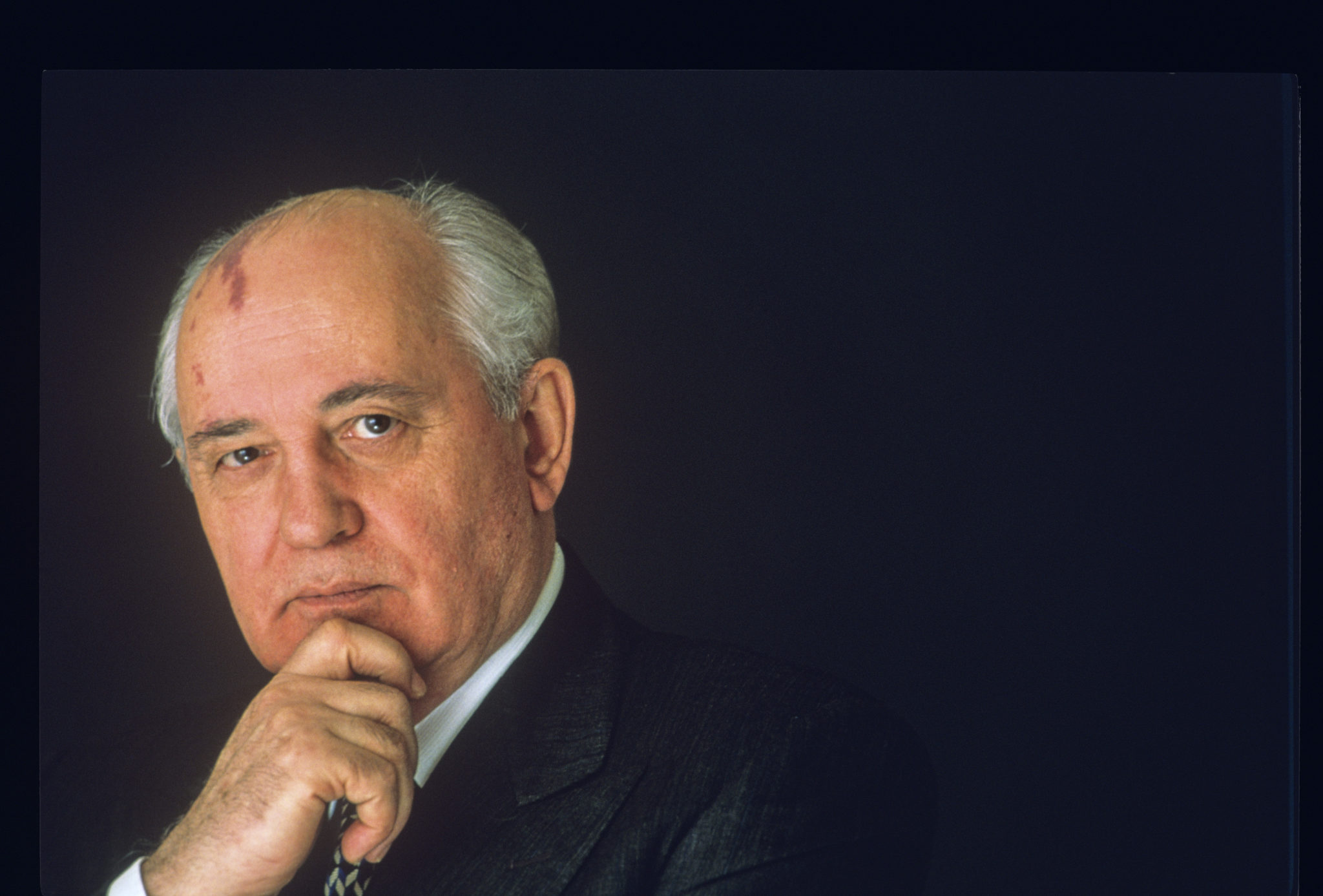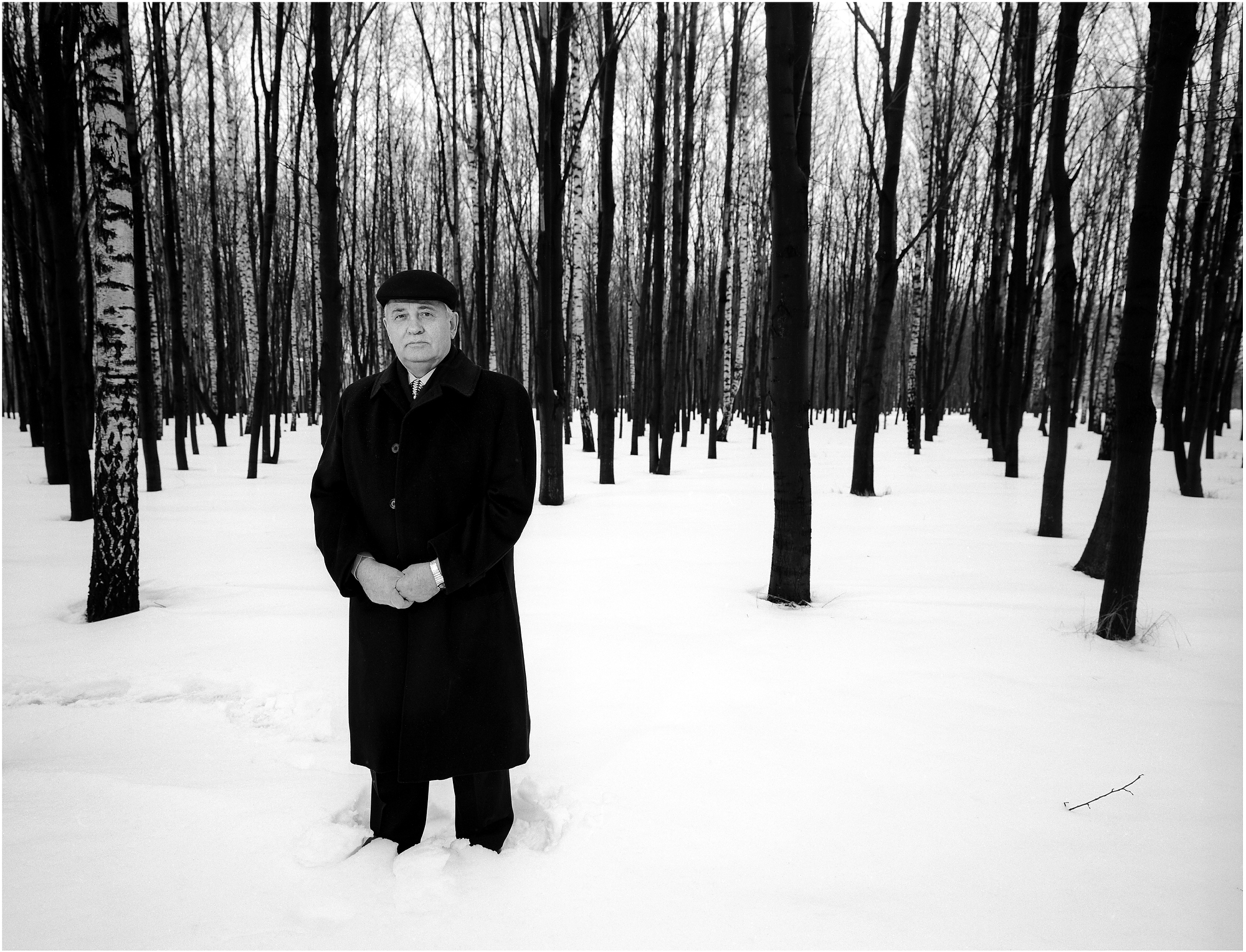In the late 90’s I was fired from my position of being the lone, and last staff photographer at LIFE. Even back then, print journalism was sliding sideways, economically, and LIFE was on the chopping block. I took my roughly $ 3000 settlement and converted it into a ticket to Norilsk, in Siberia, one of the most desperately bleak places on earth, and home to one of the largest and most environmentally deadly nickel mines in existence.

I traveled through Moscow, and knew that TIME magazine was preparing an issue on historically important individuals. I offered to photograph Mikhail Gorbachev for them, author of “glasnost,” which translated means “openness.” As a kid growing up in the 50’s and 60’s, doing duck and cover drills to get under my desk when the A bombs came, I simply wanted to meet the individual who helped ring down the Iron Curtain. My interest was personal, you see. I admired what he tried to do. TIME said they didn’t need him photographed, but they would look at my film, and they allowed me to use the resources of the TIME bureau in Moscow. They were direct in assuring me they would not pay me for the picture, which became an ongoing truism of the editorial photography marketplace.
My “studio session” in his office was a complete failure, below.

Summoning a bit of bravado, I insisted on another location driven session, and found a spate of trees near the end of Kutuzovsky Prospekt, a famous avenue in Moscow. Took three days, but he agreed to come, mostly because in terms of editorial influence, TIME magazine actually meant something back then.
He came in his fancy shoes, with his protection detail, and his typical cap. He walked to where I asked him to, and posed for about three minutes or so. I wanted him with this lonely woods as a backdrop, because he was an isolated figure in Russian history. Reformers felt his efforts for openness didn’t go far enough. Hard liners felt he gave away the farm, and dissipated the once mighty and fearsome Soviet Union into an economically impoverished supplicant on the world stage. As with all individuals who attempt change on an enormous scale, he was praised and reviled.

A wholly different Russian leader is at the helm now, yearning for those years when fear of Russia made children in faraway places race to basements, terrified of what might drop from the sky. He too, stands alone, not framed by snow and trees, but accompanied only by his own madness and cruelty.
Once again, the world is witnessing war and horror, and has been moved to action by the extraordinary reporting of journalists on the front lines in Ukraine. The photographers working there now are following in the powerful historical footsteps of photojournalists who have covered conflict, and informed, altered and shaped the world’s attitudes with their visual reporting. Robert Capa, David Douglas Duncan, Catherine Leroy, Nik Ut, David Burnett, Dickey Chapelle, John Filo, Eddie Adams–and many others–all of them made the world stop and look. Now photographers such as Erin Schaff, Tyler Hicks and Lynsey Addario, to name just a few, working at great risk to themselves, rivet, inform and horrify us. They are supported by publications such as the New York Times, and their agencies, such as AFP, Getty and Zuma Press.
For those who can assist, an excellent channel to funnel assistance to the Ukraine is Direct Relief.
More tk….
The post Standing Alone appeared first on Joe McNally Photography.






